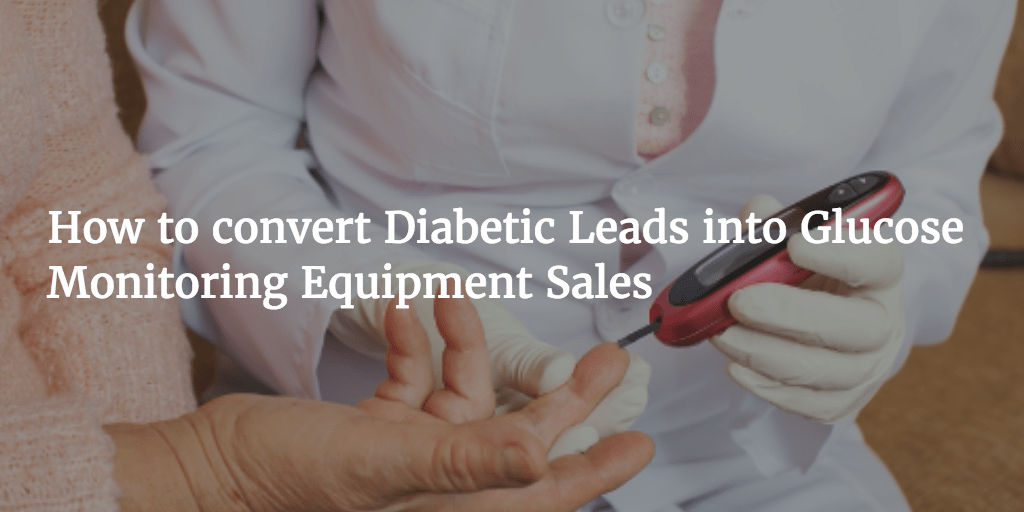Durable Medical Equipment (DME) providers servicing diabetics need to know the challenges that the illness can bring to patients. Understanding diabetes and their medical devices improves the quality of life of patients while increasing the providers’ lead conversion.
Optimize offerings as a healthcare provider to help turn diabetic leads into healthier patients with this look into diabetes and glucose monitoring equipment.
Diabetes and Glucose
Di·a·be·tesˌ noun: a metabolic disease in which the body’s inability to produce any or enough insulin causes elevated levels of glucose in the blood.
Diabetes, also known as diabetes mellitus (DM), is a group of metabolic diseases that features elevated blood sugar over a long period, which can be harmful to the body. Blood sugar, or blood glucose, is controlled by insulin, but some people may not enough insulin or not respond properly to insulin. People unable to regulate their glucose level with their body’s insulin are diabetic.
There are three types of diabetes: type 1 DM, type 2 DM, and gestational diabetes. However, while diabetes is a chronic illness, it can be controlled with the proper amount of care.
Diabetes Complications
Though diabetes can be managed, being careless can risk serious consequences. Patients must maintain a normal level of glucose in their blood to stay healthy.
Complications can include:
- Heart and blood vessel disease,
- Nerve damage,
- Kidney damage,
- Eye damage,
- Foot damage,
- Hearing impairment,
- Diabetic coma, and etc.
Hyperglycemia
Helping diabetics prevent hyperglycemia is one of the most important parts of being a DME provider. Hyperglycemia is a common diabetic medical condition caused by elevated levels of high blood sugar. This excess of blood glucose can occur in all diabetics, though type 2 diabetics are most at risk.
If left unchecked, hyperglycemia can result in eye damage, cardiovascular disease, kidney failure, nerve damage (neuropathy), skin and gum infections, joint problems, or even a diabetic coma.
Patients need to prevent hyperglycemia before it becomes an issue by ensuring that they have normal blood sugar levels. A range of 70 to 130 mg/dL before meals and less than 180 mg/dL after meals is recommended by the American Heart Association.
What Does Glucose Testing Equipment Do?
A medical device that monitors blood sugar levels is essential for many diabetics considering the severity of diabetes complications and hyperglycemia.
Glucose testing can by done by the patient with home medical devices. Most commonly, these testing devices take the form of blood glucose meters, which calculate the concentration of glucose in a patient’s blood.
Blood glucose meters work by using a small needle, also known as a lancet, to draw a drop of blood from the finger. The blood is placed on a test strip linked to the blood glucose meter, which will then evaluate the concentration of glucose in the blood.
Blood glucose meters are extremely helpful in providing patients measurements that guide correct dietary, medical, and other lifestyle choices to maintain diabetic health, such as:
- Making dietary choices according to glycemic index (GI) number, portion size, and more.
- Directing proper medication dosages.
- Recognizing when blood sugar is too high or too low.
- Evaluating the effects of stress, illness, and other outside factors that can impact blood sugar levels.
Do All Diabetics Need Glucose Testing Equipment
With type 1 diabetes, physicians may recommend testing 4 to 8 times per day depending on the patient’s diet, exercise, medication, and sleep routine. With type 2 diabetes, physicians may recommend that insulin users test 2 or more times per day depending on their medication dosage, and meal and sleep routines.
However, not all patients need to use this medical device. For example, some patients with type 2 diabetes using noninsulin medications or who manage using diet and exercise alone may not require regular tests.
Role of Diabetic Leads and the DME Provider
DME providers play an essential role in maintaining the health and wellness of patients who need to test their blood sugar levels.
By providing home glucose testing equipment like blood glucose meters, healthcare providers can give diabetics insight into their health so that they can make informed decisions.
Generating verified diabetic leads is the best way for healthcare providers specializing in diabetes maintenance to reach out to patients in need. There are many ways to generate these leads though some are more effective than others.
And as with all health leads, it is crucial for the healthcare provider to adhere to industry and government regulations like HIPAA and the TCPA.
Using a lead generation company is one of the easiest, efficient, and powerful ways to generate high-quality leads to increase conversion.
Click here to get in touch with Prizm Media for more information.


